Sharon Xiaolei Huang
Forecasting User Interests Through Topic Tag Predictions in Online Health Communities
Nov 05, 2022Abstract:The increasing reliance on online communities for healthcare information by patients and caregivers has led to the increase in the spread of misinformation, or subjective, anecdotal and inaccurate or non-specific recommendations, which, if acted on, could cause serious harm to the patients. Hence, there is an urgent need to connect users with accurate and tailored health information in a timely manner to prevent such harm. This paper proposes an innovative approach to suggesting reliable information to participants in online communities as they move through different stages in their disease or treatment. We hypothesize that patients with similar histories of disease progression or course of treatment would have similar information needs at comparable stages. Specifically, we pose the problem of predicting topic tags or keywords that describe the future information needs of users based on their profiles, traces of their online interactions within the community (past posts, replies) and the profiles and traces of online interactions of other users with similar profiles and similar traces of past interaction with the target users. The result is a variant of the collaborative information filtering or recommendation system tailored to the needs of users of online health communities. We report results of our experiments on an expert curated data set which demonstrate the superiority of the proposed approach over the state of the art baselines with respect to accurate and timely prediction of topic tags (and hence information sources of interest).
Accurate Virus Identification with Interpretable Raman Signatures by Machine Learning
Jun 05, 2022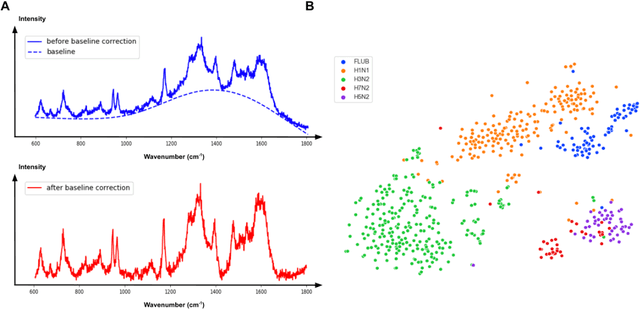
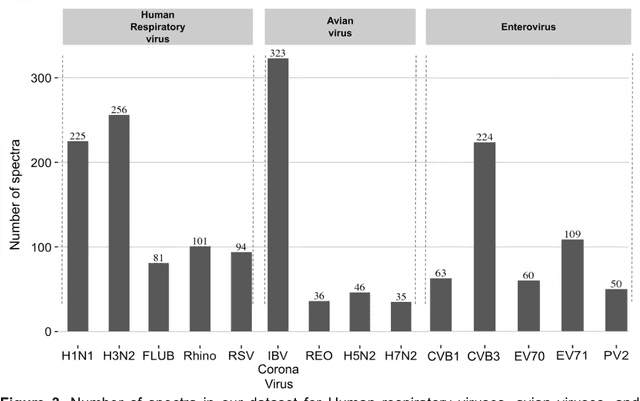
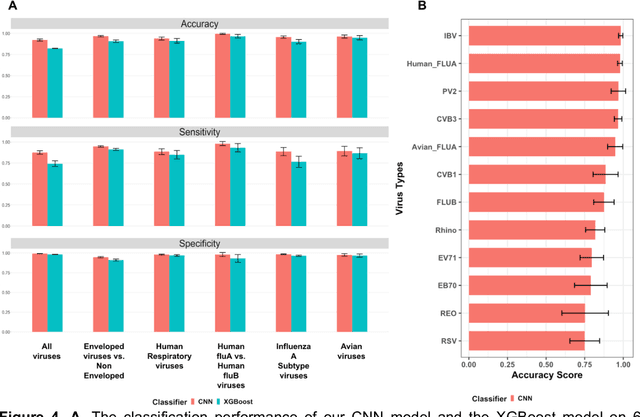
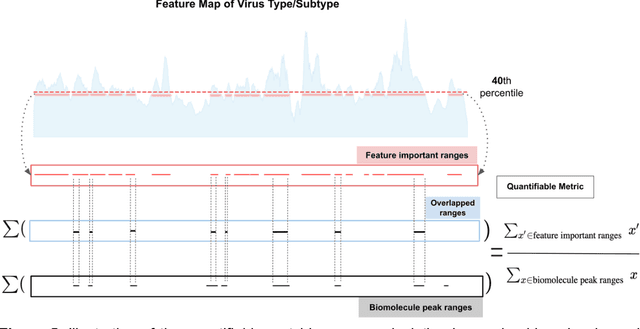
Abstract:Rapid identification of newly emerging or circulating viruses is an important first step toward managing the public health response to potential outbreaks. A portable virus capture device coupled with label-free Raman Spectroscopy holds the promise of fast detection by rapidly obtaining the Raman signature of a virus followed by a machine learning approach applied to recognize the virus based on its Raman spectrum, which is used as a fingerprint. We present such a machine learning approach for analyzing Raman spectra of human and avian viruses. A Convolutional Neural Network (CNN) classifier specifically designed for spectral data achieves very high accuracy for a variety of virus type or subtype identification tasks. In particular, it achieves 99% accuracy for classifying influenza virus type A vs. type B, 96% accuracy for classifying four subtypes of influenza A, 95% accuracy for differentiating enveloped and non-enveloped viruses, and 99% accuracy for differentiating avian coronavirus (infectious bronchitis virus, IBV) from other avian viruses. Furthermore, interpretation of neural net responses in the trained CNN model using a full-gradient algorithm highlights Raman spectral ranges that are most important to virus identification. By correlating ML-selected salient Raman ranges with the signature ranges of known biomolecules and chemical functional groups (for example, amide, amino acid, carboxylic acid), we verify that our ML model effectively recognizes the Raman signatures of proteins, lipids and other vital functional groups present in different viruses and uses a weighted combination of these signatures to identify viruses.
* 23 pages, 8 figures
Unsupervised Learning of Full-Waveform Inversion: Connecting CNN and Partial Differential Equation in a Loop
Oct 14, 2021
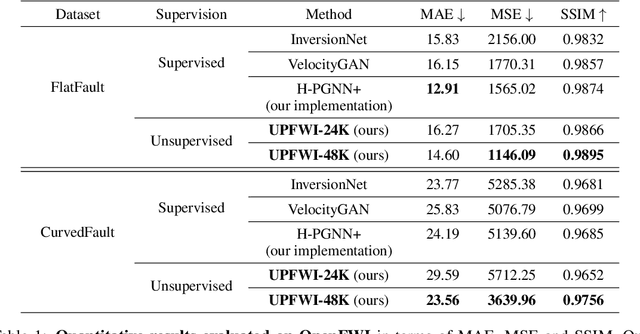


Abstract:This paper investigates unsupervised learning of Full-Waveform Inversion (FWI), which has been widely used in geophysics to estimate subsurface velocity maps from seismic data. This problem is mathematically formulated by a second order partial differential equation (PDE), but is hard to solve. Moreover, acquiring velocity map is extremely expensive, making it impractical to scale up a supervised approach to train the mapping from seismic data to velocity maps with convolutional neural networks (CNN). We address these difficulties by integrating PDE and CNN in a loop, thus shifting the paradigm to unsupervised learning that only requires seismic data. In particular, we use finite difference to approximate the forward modeling of PDE as a differentiable operator (from velocity map to seismic data) and model its inversion by CNN (from seismic data to velocity map). Hence, we transform the supervised inversion task into an unsupervised seismic data reconstruction task. We also introduce a new large-scale dataset OpenFWI, to establish a more challenging benchmark for the community. Experiment results show that our model (using seismic data alone) yields comparable accuracy to the supervised counterpart (using both seismic data and velocity map). Furthermore, it outperforms the supervised model when involving more seismic data.
Multi-turn Dialog System on Single-turn Data in Medical Domain
May 27, 2021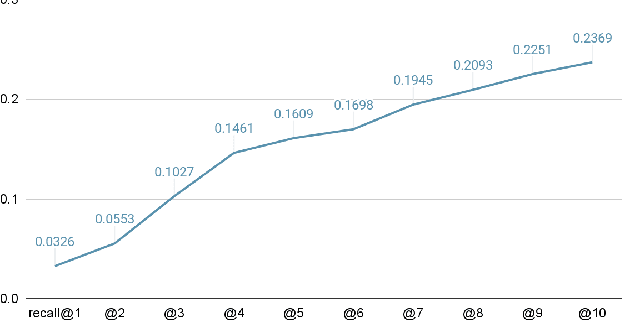
Abstract:Recently there has been a huge interest in dialog systems. This interest has also been developed in the field of the medical domain where researchers are focusing on building a dialog system in the medical domain. This research is focused on the multi-turn dialog system trained on the multi-turn dialog data. It is difficult to gather a huge amount of multi-turn conversational data in the medical domain that is verified by professionals and can be trusted. However, there are several frequently asked questions (FAQs) or single-turn QA pairs that have information that is verified by the experts and can be used to build a multi-turn dialog system.
 Add to Chrome
Add to Chrome Add to Firefox
Add to Firefox Add to Edge
Add to Edge